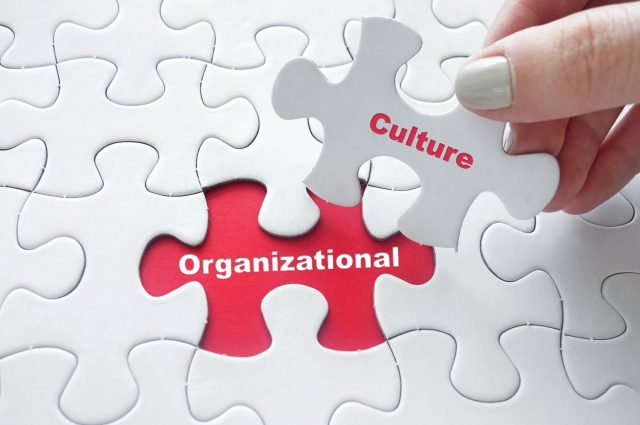In today’s fast-paced business environment, the concept of organizational culture has become increasingly significant. This intangible yet vital aspect of an organization encapsulates the values, beliefs, and behaviors that shape the daily experiences of employees and influence the company’s identity. Gerri Huck, Founder of Akonis, believes that as organizations face relentless changes, understanding the role of leadership in cultivating and adapting organizational culture is crucial for sustainable success.
Understanding Organizational Culture
Organizational culture is the collective behavior of people within an organization and the meaning that people attach to those behaviors. It includes an array of elements such as shared rituals, common norms, established values, and unwritten rules that guide employees on how to behave and make decisions. Gerri Huck, Founder of Akonis, explains that this culture is often reflected in the way an organization conducts its business, treats its employees, customers, and the broader community, and how it handles its responsibilities to its stakeholders.
The Layers of Organizational Culture
Organizational culture can be visualized in layers:
- Artifacts: These are the visible elements in an organization, such as dress codes, the office layout, ceremonies, and the language used by employees.
- Espoused Values: These include the stated norms and rules of an organization, often found in official documents.
- Basic Underlying Assumptions: These are deeply embedded, taken-for-granted beliefs that are often unconscious but guide behavior in a powerful way.
Understanding these layers helps leaders diagnose their organizational culture and determine how it supports or hinders their strategic objectives.
The Role of Leadership in Shaping Organizational Culture
Leaders are the architects and stewards of organizational culture. They set the tone and establish the norms by their actions and decisions. Gerri Huck of Akonis explains that the influence of leadership on organizational culture is profound and operates in various ways:
- Vision Casting
Leaders articulate a clear vision for the future of the organization. This vision provides a sense of direction and purpose, aligning the organizational activities and cultural attributes with long-term goals. By communicating the vision effectively and passionately, leaders inspire and motivate employees to internalize these goals as their own. - Modeling Behavior
Leadership is not just about making decisions and giving orders; it’s also about behavior and example. The behavior of leaders sets a benchmark for expected behaviors within the organization. When leaders consistently demonstrate honesty, integrity, and dedication, they establish a culture that promotes these values across all levels of the organization. - Reinforcement Mechanisms
Leaders influence culture by what they choose to reward and what they choose to punish. Systems of rewards and recognitions, performance management processes, and even the criteria for promotions reflect the values that the organization deems important. These mechanisms reinforce the desired culture by encouraging behaviors that align with organizational values and discouraging those that do not. - Communication Strategies
Effective communication is pivotal in shaping and maintaining organizational culture. Leaders communicate not only through formal channels, such as corporate communications and team meetings but also through informal interactions. Their ability to openly share information, listen to employee concerns, and effectively resolve conflicts strengthens the organizational culture by building trust and transparency.
Managing Cultural Change
Change is inevitable in any dynamic organization. Leaders must not only drive change initiatives but also manage the cultural shifts that accompany them. Gerri Huck, Founder of Akonis, provides some strategies leaders can employ to manage cultural change effectively:
- Assessing Cultural Landscape
Before implementing any change, it is essential for leaders to understand the existing culture thoroughly. This involves identifying cultural strengths that can be leveraged to facilitate change and pinpointing cultural elements that may resist change. - Aligning Culture with Strategy
Leaders need to ensure that the organizational culture is aligned with the strategic changes they wish to implement. This may involve modifying some cultural elements, reinforcing others, and introducing new norms and values that support the strategic direction. - Engaging and Empowering Employees
Leaders should involve employees at all levels in the change process. This engagement includes communicating the reasons for change, the benefits it will bring, and the role each employee plays in achieving it. Empowering employees to contribute to cultural evolution ensures their buy-in and commitment, making the change more sustainable. - Continual Learning and Adaptation
Organizational culture should evolve as external and internal conditions change. Leaders must foster a culture of learning and innovation where feedback is encouraged and failures are seen as opportunities for growth. This adaptability ensures the organization remains resilient and competitive.
Organizational culture is a vital determinant of an organization’s identity and performance. Leaders play a critical role in shaping, transmitting, and transforming this culture. Gerri Huck of Akonis emphasizes that by understanding the dynamics of organizational culture and employing effective strategies to manage cultural change, leaders can ensure their organizations adapt and thrive in the ever-changing business landscape. This understanding and adaptability not only enhance the organization’s capacity to deal with immediate changes but also solidify its long-term success and sustainability.






